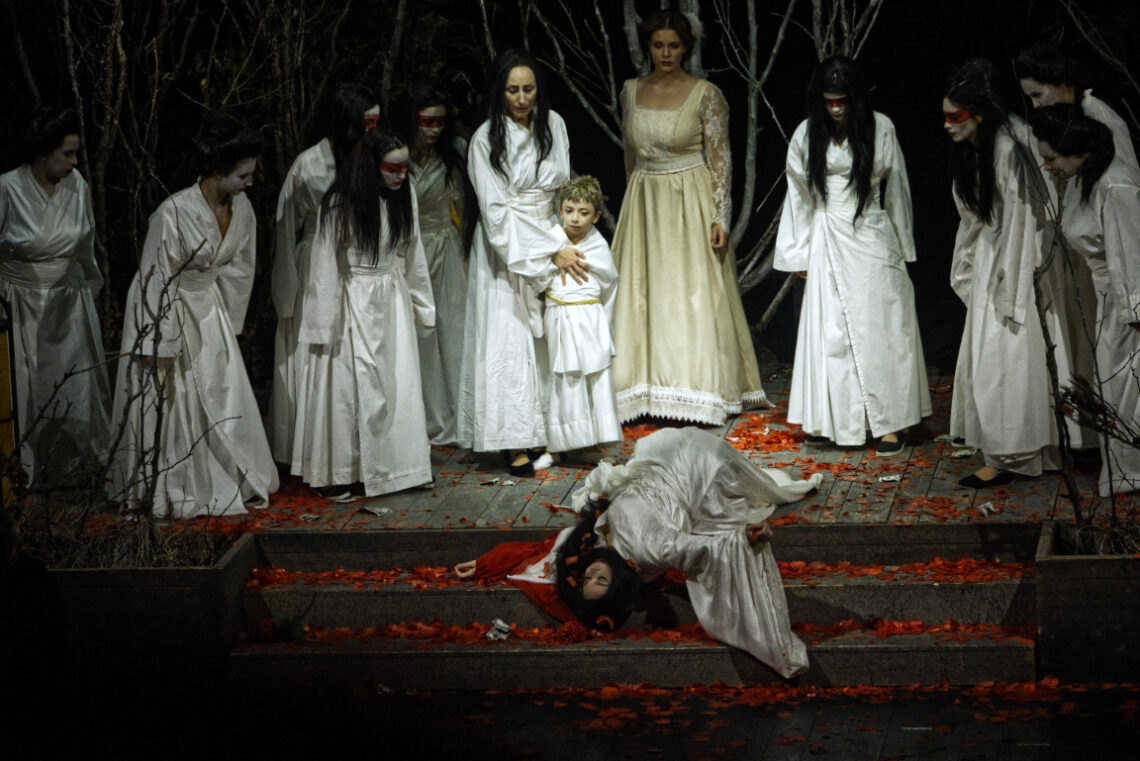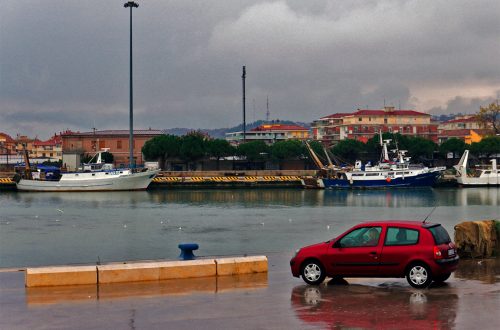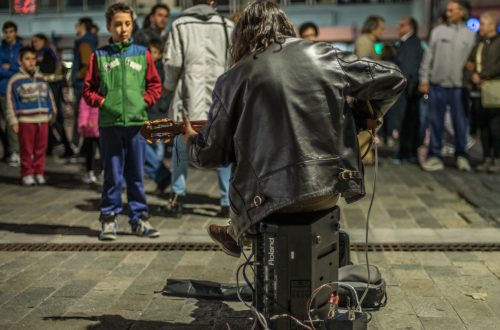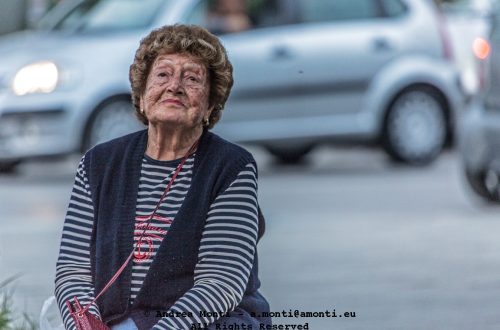
The Death of Cio-Cio san
The final scene of yesterday’s Madama Butterfly’s ‘Prima’ at Teatro Marrucino.
Opera photography is always a delicate dance between anticipation and reaction. The photographer must respect the performers’ craft while being acutely aware of the unfolding drama, ready to translate it into still imagery that holds the same emotional weight as the music itself.
In this frame, taken during the tragic denouement of Madama Butterfly, the composition works almost like a Renaissance tableau — each character positioned with clear intention. The central focus rests on Cio-Cio-San’s lifeless figure, draped in white and crimson, her body collapsed against the steps like a human punctuation mark. Around her, the women in white form a crescent of grief and judgement, their downward gazes directing the viewer’s eyes back to the fallen heroine.
From a technical perspective, the exposure is well-handled given the challenges of theatrical lighting. The stage’s deep shadows and isolated pools of light are notorious for tricking metering systems, yet here, the balance between the illuminated costumes and the surrounding darkness feels carefully controlled. The whites retain texture without drifting into overexposure, while the subtle tones of the flesh and fabric preserve a naturalistic quality, even under artificial light.
The colour palette is restrained but deeply symbolic — the red petals scattered on the stage floor punctuate the scene with visual equivalents of Puccini’s soaring, heartbreaking final chords. The muted cream of Kate’s gown provides a subtle counterpoint to the austere white of the other women, subtly marking her difference in role and allegiance.
One notable strength of this photograph lies in its depth. The shallow steps, the cluster of figures, and the dark backdrop of bare branches create layers that guide the eye. There’s a sense of enclosure, almost of ritual, that makes the tragedy feel inevitable.
Capturing opera at its most dramatic moment is not merely a question of sharpness or framing — it is about freezing the exact point where gesture, light, and emotion reach their peak. This image succeeds in that, offering a still that could stand on its own as a piece of narrative art, even without the aria.




